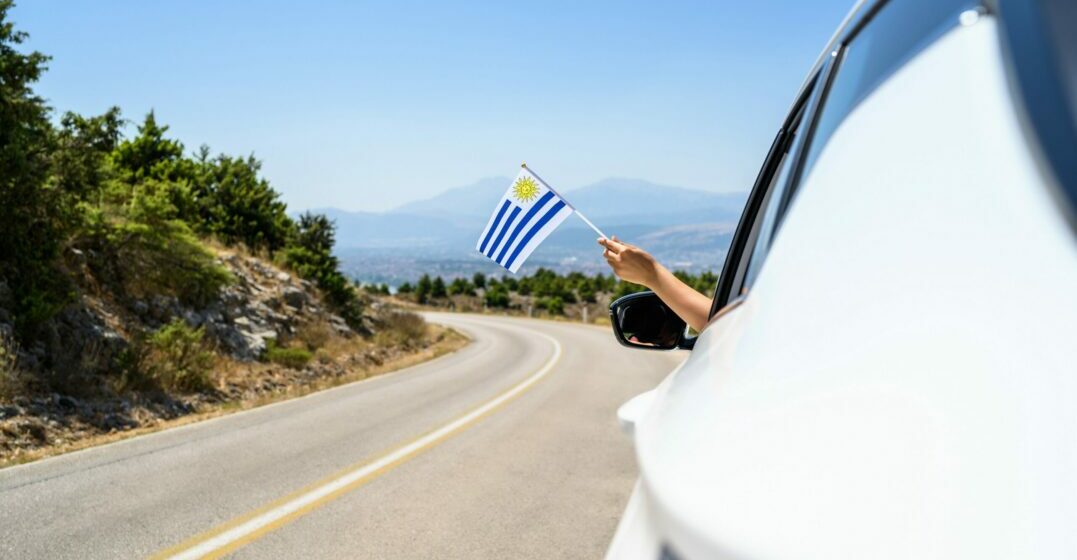Updated on October 15, 2024

What languages are spoken in Uruguay?

Spanish is the official language of Uruguay. It is spoken by almost 99% of the population. You may be surprised to learn that Portuguese, Italian and English are also spoken in Uruguay. Also, Uruguay has a Spanish dialect called Rioplatense Spanish.
Uruguay is a small country in South America, but it is full of linguistic diversity! In this article we will learn about the different languages spoken in Uruguay, the history of why these languages are spoken, some differences in Spanish in Spain and Spanish in Uruguay, and just what Rioplatense is.



Uruguay was originally settled by the Charrúa people. The Spanish colonized the area and established the capital Montevideo in 1726. Uruguay won its independence after years of wars between Spain, Portugal, Argentina and Brazil who were all fighting for control. The colonial influence led to Spanish becoming the official language of Uruguay. A dialect called Rioplatense is also very common in Uruguay.
If we count Spanish along with Rioplatense, Italian, Portuguese, Portuñol, and English, there are six major languages spoken in Uruguay.
Italians started arriving in Uruguay in the 1870s, with large numbers arriving around the time of the world wars. Today, almost 90% of Uruguay’s current population has Spanish or Italian ancestry. Many people still speak Italian and Italian words are part of Uruguayan Spanish:
Nona (grandmother), farinata or fainá (chickpea flour crêpe), festichola (party)
Portuguese from Brazil also has a strong influence on Spanish spoken in Uruguay. Spanish and Portuguese have mixed and created a new language called Portuñol. Speakers of Portuñol mainly live in the border regions between Uruguay and Brazil.
Today you can find a few English speakers in Uruguay. About 5 – 10% of the native-born population speak English as a second language. If you plan to visit the capital Montevideo, you will notice these English speakers. Uruguay is also becoming a destination for U.S. retirees, many of whom are monolingual English speakers.



What is different about the Spanish that Uruguayans speak? Italian and Portuguese have influenced the Spanish spoken in Uruguay. In the chart, you can compare the words across different countries. Some words in Uruguayan Spanish are very similar to Italian.
| English Word | Uruguay | Spain | Brazil | Italy |
| apartment | apartamento | piso | apartamento | appartamento |
| earring | caravana | pendiente | brinco | orecchino |
| car | auto | cocho | carro | macchina |
| computer | computadora | ordenador | computador | computer |
| butter | manteca | mantequilla | manteiga | burro |
| pineapple | ananá | piña | abacaxi | ananas |
| avocado | palta | aguacate | abacate | avocado |
Rioplatense is a dialect of Spanish found in Uruguay. This dialect is spoken in the areas in and around the Rio de la Plata basin of Uruguay and Argentina. The Rioplatense dialect is the standard used in media in Uruguay and Argentina.
Rioplatense Spanish tends to borrow technical words from American English, and Spanish spoken in Spain tends to borrow them from British English or French.In the southern region of the country, including Mondevideo, the voseo form is used. The pronoun vos (you) is used instead of tú (you). Tú is the informal form of ‘you’ that is used in most Spanish-speaking countries, and Spain uses the vos form.
But, vosotros (you, plural) which is used in Spain is replaced with ustedes (you, plural) in Rioplatense. This is common in most other Spanish-speaking countries in Latin America.
Rioplatense also has words that differ from Spanish:
| English | Spanish | Rioplatense |
| Potato | Patata | Papa |
| Peach | Melecotón | Durazno |
| Hot dog | Perrito | Pancho |
| Bowtie | Pajarita | Moño |
| Cell phone | Móvil | Celular |
You can listen to the Uruguayan accent in this video.
Uruguay is a great place to learn a unique type of Spanish, with an influence of Portuguese and Italian. If you are looking to meet Italians who speak Spanish, this is the place to be!


